Jeombongsan Mountain Gombaeryeong Pass (점봉산 곰배령)
2024-02-16
12 Gombaeryeong-gil, Girin-myeon, Inje-gun, Gangwon-do
This ecological area at the summit of Jeombongsan Mountain, situated 1,100 meters above sea level, spans approximately 16.5 hectares. It is often referred to as the "garden of heaven" due to the sheer diversity of plants and wildflowers in the area. The trail leading to the pass has a relatively gentle slope, making it accessible to all. It extends for 10.5 kilometers and typically takes about four hours to complete. Visitors need to make reservations to visit the pass.
The Stand on Hajo Bay (더 스탠드 온 하조베이)
2024-02-16
79 Hajodaehaean-gil, Hyeonbuk-myeon, Yangyang-gun, Gangwon-do
Located at Yangyang's Hajodae Beach, also known as the “Surfer Beach,” this rooftop restaurant offers stunning ocean views. Facing the sea, guests can enjoy the seascape as if admiring a work of art. The outdoor area is designed to allow visitors to fully immerse themselves in nature, taking in the soothing sounds of the waves and the expansive sea views. The restaurant's signature dish is the haesanmul jjamppong pasta (spicy seafood pasta). The menu also includes a variety of a la carte items and set menus, catering to diverse tastes.
Beopsuchigyegok Valley (법수치계곡)
2024-02-05
Beopsuchi-ri, Hyeonbuk-myeon, Yangyang-gun, Gangwon-do
Beopsuchigyegok Valley meanders through the northern and southern areas of Gangneung and Yangyang, eventually merging with the East Sea. To reach Beopsuchigyegok Valley on the northern side of Odaesan Mountain, follow the Eoseongjeongyegok Valley, which is situated at the uppermost part of Namdaecheon Stream. This area is known as a returning point for species like big-scaled redfin, sweetfish, and salmon from the sea. Beopsuchigyegok Valley is believed to be the origin of the main stream of Namdaecheon Stream. Its name is derived from the concept of the "water of wisdom", a Buddhist metaphor symbolizing the Buddha’s wisdom washing away earthly desires, reflecting the clarity of the valley's waters.
Songjiho Beach (송지호 해수욕장)
2024-03-18
85 Simcheungsu-gil, Jugwang-myeon, Goseong-gun, Gangwon-do
Located near Songjiho Lake, one of the most famous lagoons on the eastern coast of Korea, Songjiho Beach stretches 2 kilometers in length and is 100 meters wide. It is also located close to Seoraksan Mountain. The beach is quite popular, thanks to its clear water and shallow depth. The island just off the coast, Jukdo Island, features a handsome collection of bamboo trees and unique rock formations.
Gangwongamyeong Provincial Office, Wonju (원주 강원감영)
2025-01-17
Ilsan-dong, Wonju-si, Gangwon-do
Gangwongamyeong Provincial Office, dating back to the Joseon era, is celebrated for its stunning night views. Originally serving as the office for the provincial governor of Gangwon-do during the Joseon period, it functioned in this capacity for 500 years. Presently, only a few structures, including the Seonhwadang Hall, still stand. The site underwent restoration and was opened to the public in 2018.
Seoraksan Heullimgol Valley (설악산 흘림골)
2024-02-16
San1-71, Osaek-ri, Seo-myeon, Yangyang-gun, Gangwon-do
Yangyang’s Heullimgol Valley, named for its cloud-like, foggy appearance due to the surrounding high mountains and deep valleys, offers a spectacular view and serves as the gateway to Deungseondae. This spot provides an expansive view of the southern side of Seoraksan Mountain. Notable sites near Heullimgol Valley include Yeosimpokpo Falls, Deungseondae, Deungseonpokpo Falls, Geumgangmun Gate, and Jujeongol Valley. Access to Heullimgol Valley is strictly limited to 5,000 visitors per day, with entry based on time reservations. Therefore, visitors must make a reservation through the Korea National Park Service's reservation system before visiting.
Cheoneunsagyegok Valley (Wonju) (천은사계곡(원주))
2025-01-17
Gwirae-ri, Gwirae-myeon, Wonju-si, Gangwon-do
033-737-4579
Cheoneunsagyegok Valley is located at the entrance to the hiking trail to Baegunsan Mountain. The area is adorned with a diverse array of tree species, including pine trees, creating an ideal environment for woodland walks. Stretching for about 500 meters from the entrance to Cheoneunsa Temple, the valley features clear, cool waters and broad rocks, making it a favored destination for summer vacationers.
Songjeonhaebyeon Beach (송전해수욕장)
2024-02-05
21-7 Songjeon-ri, Sonyang-myeon, Yangyang-gun, Gangwon-do
This beach ranks among Korea's most favored surfing destinations. With its pristine white sand, it stretches 900 meters in length and 80 meters in x_width, and has a depth of 1 meter. It holds the distinction of being the second largest and longest white sand beach in Yangyang-gun, following Naksanhaebyeon Beach. Notably, the water here is so clean and clear that visitors can enjoy clamming.
Chiaksan Recreational Forest (치악산자연휴양림)
2024-02-16
66 Hyuyangnim-gil, Panbu-myeon, Wonju-si, Gangwon-do
Chiaksan Recreational Forest is a national recreational facility situated in Chiaksan Mountain. It provides accommodations with capacities ranging from three to ten people. The facility is also equipped with outdoor observatories, walking trails, and hiking trails for nature enthusiasts. Each accommodation unit permits individual barbecues, apart from the Red Clay Room. Additionally, the facility offers a variety of experience programs, including the Guided Chiaksan Forest Tour and woodcraft experience programs, which are available outside the winter season.
Cheongganjeong Pavilion (청간정)
2024-03-18
5110 Donghae-daero, Toseong-myeon, Goseong-gun, Gangwon-do
Cheongganjeong Pavilion, located atop a cliff, was built during the mid-Joseon period. It is situated at the point where Cheonggancheon Stream, originating from Seoraksan and Cheonhusan Mountains, flows into the East Sea. The view of the pine forest and the East Sea draws many visitors. Nearby attractions include Cheongganhaebyeon Beach, Cheonjinhaebyeon Beach, Ayajinhaebyeon Beach, as well as Bongpo Port and Ayajin Port.
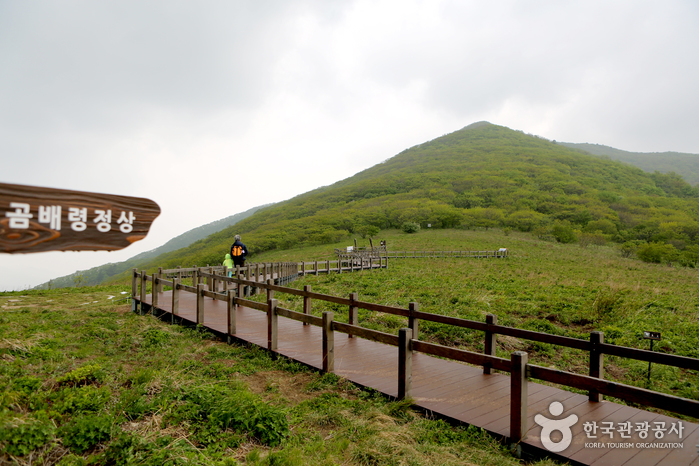
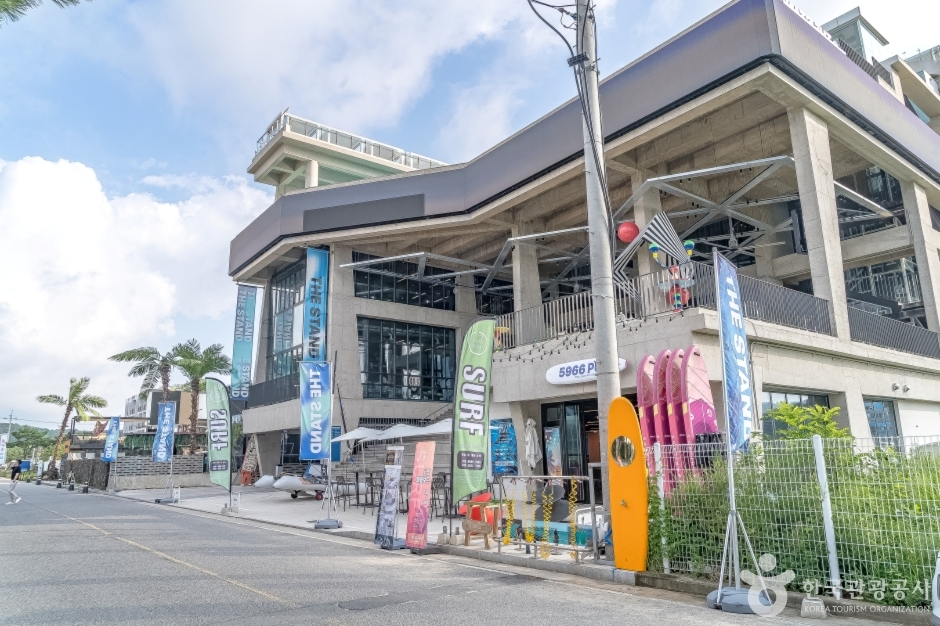
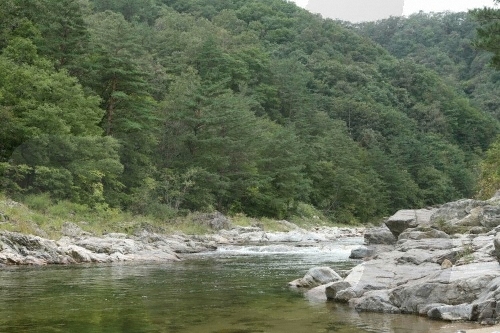
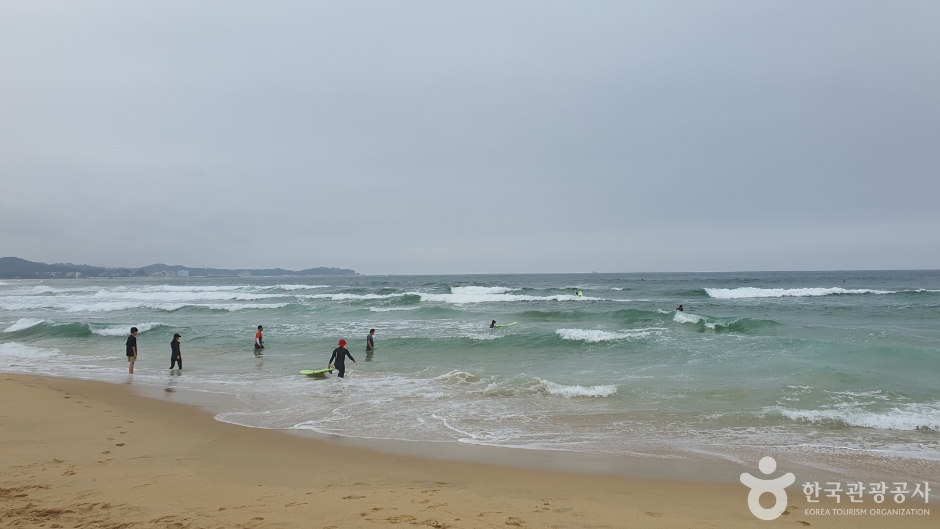
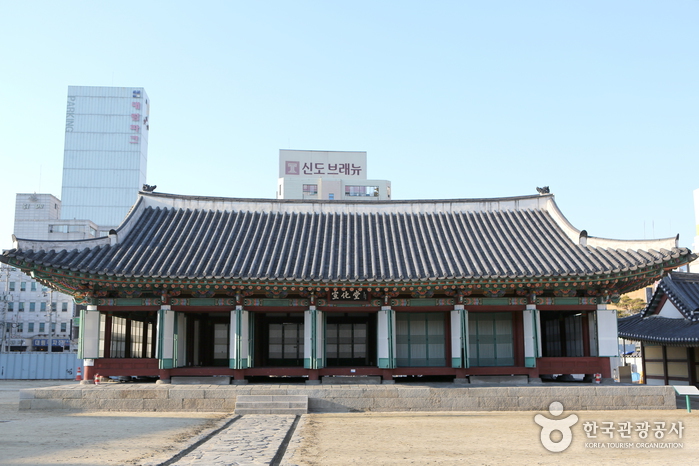
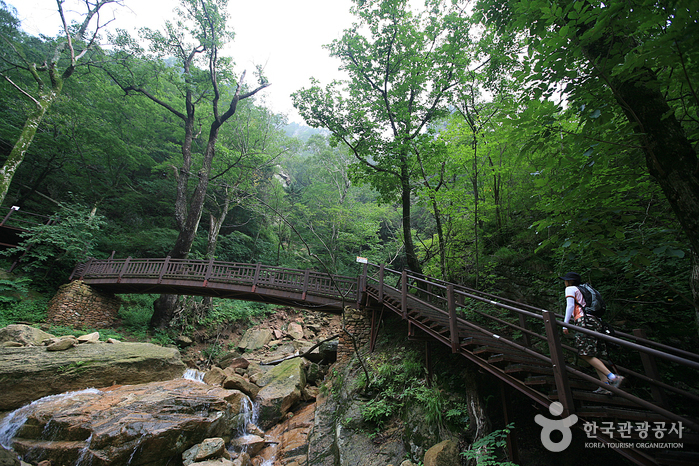
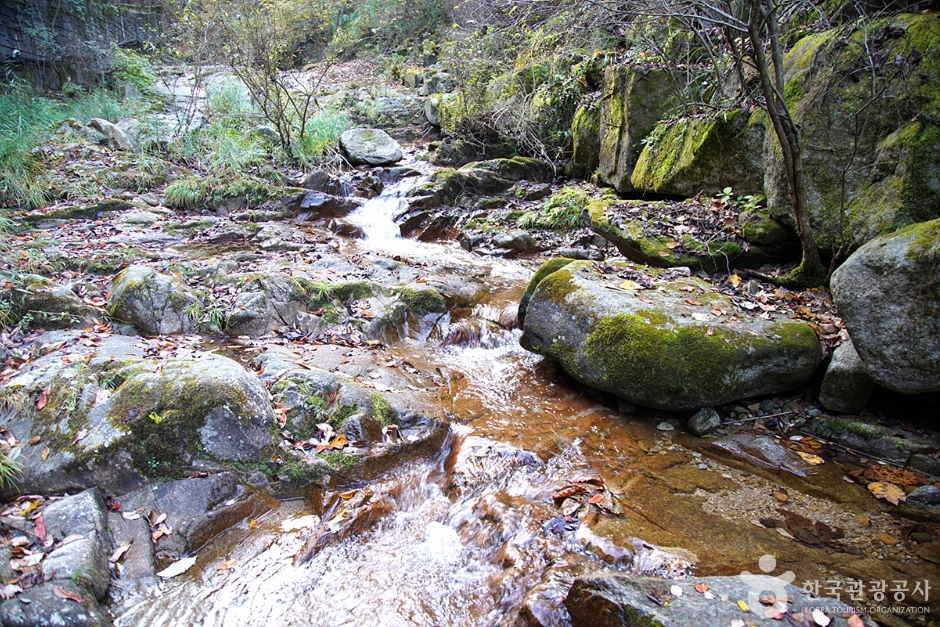
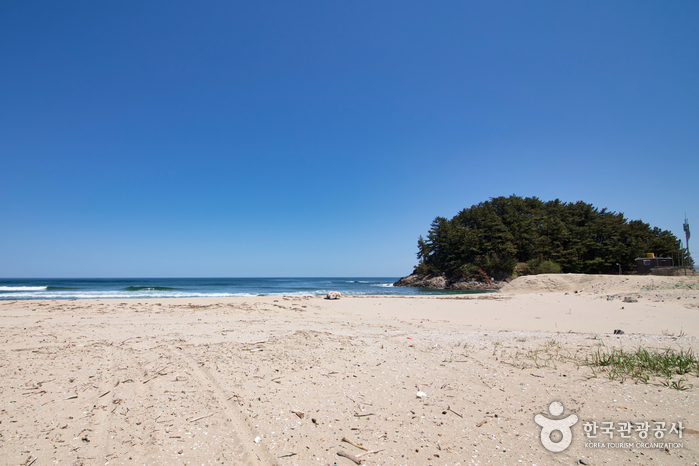
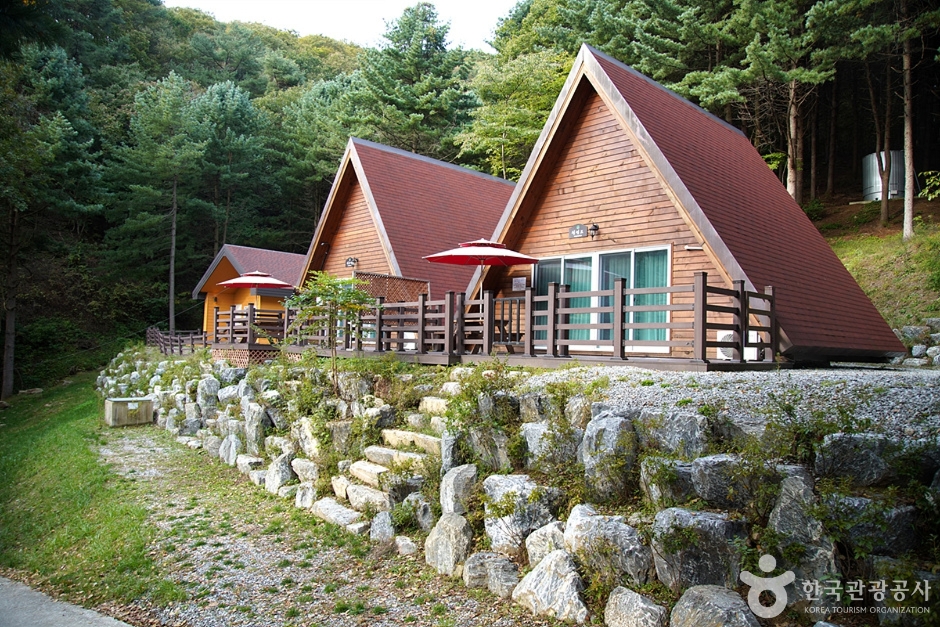

 English
English
 한국어
한국어 日本語
日本語 中文(简体)
中文(简体) Deutsch
Deutsch Français
Français Español
Español Русский
Русский